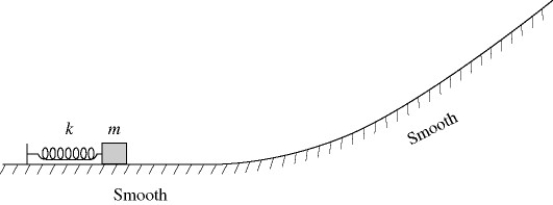Multiple Choice
A box of mass m is pressed against (but is not attached to) an ideal spring of force constant k and negligible mass, compressing the spring a distance x. After it is released, the box slides up a frictionless incline as shown in the figure and eventually stops. If we repeat this experiment with a box of mass 2m 
A) the lighter box will go twice as high up the incline as the heavier box.
B) just as it moves free of the spring, the lighter box will be moving twice as fast as the heavier box.
C) both boxes will have the same speed just as they move free of the spring.
D) both boxes will reach the same maximum height on the incline.
E) just as it moves free of the spring, the heavier box will have twice as much kinetic energy as the lighter box.
Correct Answer:

Verified
Correct Answer:
Verified
Q5: A student slides her 80.0-kg desk across
Q20: A potential energy function for system 1
Q22: The potential energy for a certain mass
Q32: Two identical balls are thrown directly upward,ball
Q43: A child pulls on a wagon with
Q54: You carry a 7.0 kg bag of
Q90: A 2.0 kg mass is moving along
Q91: The angle between vector <img src="https://d2lvgg3v3hfg70.cloudfront.net/TB4469/.jpg" alt="The
Q96: A mass is pressed against (but is
Q99: A graph of the force on an